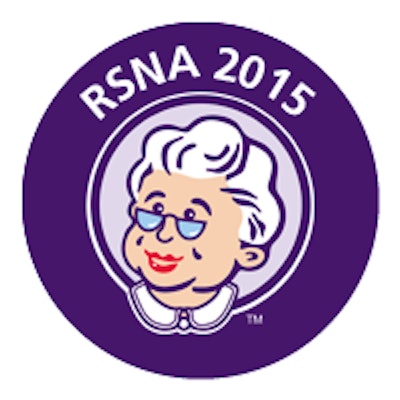
CHICAGO - Since 2009, almost half of U.S. states have adopted breast density notification laws, and there has been much discussion about how these laws have affected the use of supplemental imaging, such as ultrasound. But have they also affected how radiologists report breast density on mammography?
It's an important question, especially since most women fall within the two density categories that are most subjective: scattered areas of fibroglandular density and heterogeneously dense, according to presenter Dr. Manisha Bahl of Duke University School of Medicine.
"Several theories have been proposed about the impact of these notification laws on reporting practices of radiologists," she told session attendees. "Radiologists may downgrade their assessment of density to avoid reporting requirements -- or they may upgrade their assessment so that supplemental screening can be ordered and their liability minimized. The purpose of our study was to evaluate the impact of these laws on radiologists' reporting practices nationally."
Bahl and colleagues used information from the American College of Radiology's (ACR) national mammography database to collect state-level data, month by month, over a 20-month period. They then determined the percentage of mammograms reported as heterogeneously or extremely dense, as well as the breast cancer detection rate. Thirteen of 17 states that had passed density notification laws during the study time frame and had submitted data to the ACR's national mammography database were included in the analysis.
There was a statistically significant decrease in the percentage of mammograms reported as dense in the month after law enactment compared to the month before: 40% versus 43% (p < 0.001), the researchers found. The percentage of mammograms reported as dense hit its lowest point, 39.3%, two months after law enactment, but increased to 42.8% by 10 months after such legislation had been implemented. There was no statistically significant difference in the breast cancer detection rate in the month before and the month after law enactment, or in the month before and 10 months after.
Breast density notification laws and their attendant publicity have brought new attention to the assignment and importance of breast density -- and seem to temporarily affect radiologists' reporting patterns, Bahl concluded.
"This may have occurred because radiologists wanted to avoid the new reporting requirements, or because they feared their facilities would be overwhelmed by large numbers of women seeking supplemental screening," she said. "Reporting patterns returned to prelegislation levels once radiologists realized the new requirements didn't pose significant burdens on individuals' or the facility's workflow."
Who's talking to patients?
The effect of breast density notification laws on radiologists' reporting practices may be transient, but the question of who exactly is educating women about breast density remains, according to a presentation given during the same session. The laws recommend that patients discuss their breast density and possible supplemental testing with their primary care providers, but more often women are seeking that information from radiology technologists, said presenter Dr. Shadi Aminololama-Shakeri of the University of California, Davis.
And why not? Technologists are often the first provider a woman encounters for breast cancer screening, Aminololama-Shakeri said.
"Breast density notification laws are intended to raise awareness," she said. "But we haven't understood who is discussing the issue with the patients themselves. Since technologists are often the first provider women encounter for breast cancer screening, they have a significant role, and we may need to put more time and resources into technologist education about breast density."
Aminololama-Shakeri's group sought to investigate how aware technologists are of California's breast density notification law and its impact on their practice. Almost two years into the law's enactment, the team distributed an anonymous survey to 133 technologists at an educational conference, receiving 110 responses for a response rate of 83%. The majority of respondents worked in a managed care setting (60%), with private practice coming in second (32%).
The survey asked technologists about their awareness of the law, whether they'd noticed increased concern about breast density from their patients, how comfortable they felt answering patients' questions about breast density, and whether they would be interested in further education about the issue.
Ninety-five percent of survey respondents were aware of California's breast density notification law. Sixty-seven percent of technologists said they had noticed a change in patients' level of concern about breast density, and 53% said they address questions about breast density on a daily basis, with the majority of these questions related to what breast density means and what women with dense tissue should do.
Common patient concerns regarding breast density included the following:
- Effectiveness of mammograms in dense breasts -- 82%
- Getting additional screening tests -- 59%
- Risk of breast cancer due to dense tissue -- 59%
Of the survey participants, 71% reported being comfortable answering patients' questions about breast density; 63% said they referred patients with questions about breast density to their doctor and 55% said they explained to the patient that she may need additional imaging.
In any case, it's clear that women are seeking information about the issue of breast density from other sources besides their primary care provider, Aminololama-Shakeri concluded. And radiologists are one of these "other sources" as well, she said, responding to a comment that radiologists have a responsibility to educate women about the issue.
"I agree that radiologists have a responsibility to educate women about breast density," she said. "And that's where the 'value-versus-volume' conversation will come into play."




















